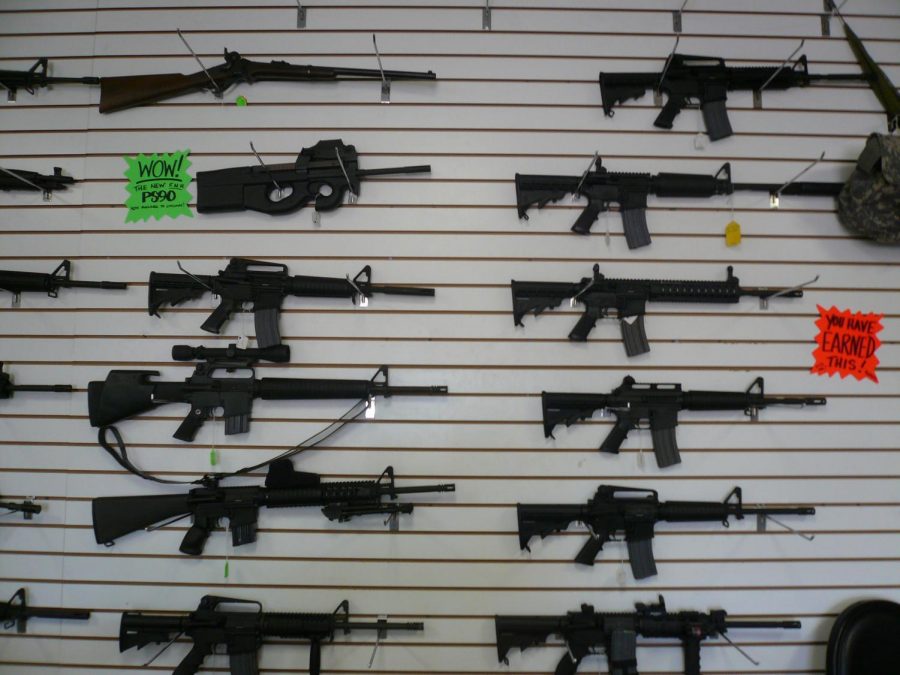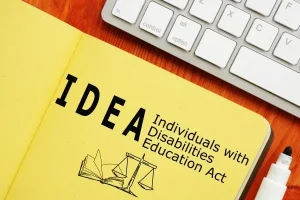An Attempt to Clarify the Gun Debate
April 26, 2018
The political atmosphere post-Parkland has been a dizzying haze of craziness on both sides, with terms like “crisis actor” and “right to bear nukes” (yes, really) being used as—ironically enough—weapons to fuel the seemingly everlasting gun debate.
It’s important to first establish this: the claims made in strawman arguments don’t account for the vast majority of actual opinions held by the population. Some examples include survivor David Hogg asserting that the NRA wants to “continue to sell more guns” and “murder more children” or Wayne LaPierre, the head of said association, declaring that advocates of gun control “don’t care about America’s school system and schoolchildren” and that their goal is to “eradicate all individual freedoms.” That’s as good a starting point as any, I suppose—not one rational thinker on either side, the right or the left, wants to kill children. What people on both sides can’t understand is that the opposition simply believes in a different method of solving the gun problem in our country. The thought that either idea—wanting to uphold your right to self-preservation or wanting to restrict access to certain weapons—makes you a proponent of child murder is preposterous. Not only is that a huge leap in logic in its own right, it muddies the debate and keeps people from getting to actual solutions to the problem. Now, since that’s out of the way, it’s time to clear up some misconceptions about guns that are often presented as points of argumentation.
First—“automatic and semi-automatic” weapons. The difference between the two is rather simple: the former fires repeatedly with one trigger pull and the latter fires just once. The importance of that distinction ought to be obvious. “Fully-automatic” weapons are significantly harder to get than their semi-automatic counterpart, as regulations from as far back as 1934 have kept a normal citizen from obtaining one. In fact, the checks to purchase a fully-automatic weapon can take as long as several months, and said purchase is incredibly expensive.
However, bump stocks—another hotly contested topic—can be used to make semi-automatic weapons fire faster. A bump stock is a piece of plastic or metal molded to a weapon to use the recoil of each shot to “bump” the weapon into the trigger finger—this allows the shooter to fire at incredibly high rates. The weapon thus becomes almost indistinguishable from a fully automatic firearm, even though the weapon still doesn’t technically fire automatically. Though these are legal in many states, President Trump is taking actions to ban them. Gun owners, however, question the feasibility of a federal ban.
Next, the definition of an “assault weapon.” A key feature of an assault weapon is that it can change between the aforementioned automatic and semi-automatic modes—also known as selective-fire. A key advocacy for many gun control proponents is a ban on these weapons, but frankly, said advocacy isn’t supported by the facts. The argument in favor of banning them usually claims that a “weapon of war” is unnecessary for a normal citizen. However, evidence from the CPRC suggests that when removing the outlier of the Newtown shooting in 2012, “the average number of deaths per attack when an “assault weapon” is [used is] basically the same as when other types of guns are used (5 versus 4.9).” Would a complete ban be useless? Not necessarily. Said ban could have mitigated the effect of certain shootings—like the tragedy at Las Vegas—but as a whole, statistics across the board demonstrate that it’d have a relatively small net benefit. Consider, too, the infrequency of these events: “Mass shooting deaths make up less than four percent of gun homicides in the US, while shootings with rifles, including assault weapons, make up less than three percent.” It’s true that an assault weapons ban could have had an effect on certain shootings, but, again, it appears that a ban on assault weapons would do little to combat the majority of mass shootings.
Past just assault weapons, further statistics show that gun bans, in general, do little to deter crime. According to John R. Lott. Jr., “states with the largest increases in gun ownership also have the largest drops in violent crimes…..the effect on ‘shall-issue’ (concealed gun) laws on these crimes (where two or more people were killed) has been dramatic. When states passed these laws, the number of multiple-victim shootings declined by 84 percent. Deaths from these shootings plummeted on average by 90 percent and injuries by 82 percent.” Furthermore, gun advocates often point to the fact that guns are used for self-defense, as a report from the CDC states: “studies that directly assessed the effect of actual defensive uses of guns (i.e. incidents in which a gun was ‘used’ by the crime victim in the sense of attacking or threatening an offender) have found consistently lower injury rates among gun-using crime victims compared with victims who used other self-protective strategies.”
Another point of contention is the Second Amendment. In its entirety, it reads: “a well-regulated Militia, being necessary to the security of a free State, the right of the people to keep and bear Arms, shall not be infringed.” Many wonder what exactly the Founders meant—what is the Militia? Does that right expand past said Militia to the individual? Don’t ask me. I’m not going to pretend I’m an expert on the Constitution. However, the Supreme Court is. Landmark decisions have made it clear that the right to bear arms ought not to be infringed upon. Take, for example, D.C. vs. Heller, in which SCOTUS ruled that the Second Amendment protects the right to possess a firearm unrelated to a well-regulated militia for lawful purposes. This was reaffirmed and expanded in McDonald vs. Chicago to the States, outside of the District of Columbia (which is what D.C. vs. Heller had ruled). However, some are suggesting that we amend the Second—even the former Supreme Court Justice, John Paul Stevens.
First: that’s incredibly improbable. It’s possible, but other than controlling the scope of an Amendment, the U.S. government is limited in rewriting the Constitution. As Article V states: “the Congress, whenever two thirds of both houses shall deem it necessary, shall propose amendments to this Constitution, or, on the application of the legislatures of two thirds of the several states, shall call a convention for proposing amendments, which, in either case, shall be valid to all intents and purposes, as part of this Constitution, when ratified by the legislatures of three fourths of the several states, or by conventions in three fourths thereof, as the one or the other mode of ratification may be proposed by the Congress; provided that no amendment which may be made prior to the year one thousand eight hundred and eight shall in any manner affect the first and fourth clauses in the ninth section of the first article; and that no state, without its consent, shall be deprived of its equal suffrage in the Senate.” That’s either a ⅔ majority vote in both the Senate and the House of Representatives or ⅔ of the State legislatures. In other words, it’s hard. Really hard. So hard, in fact, that only 17 have made it past this arduous process in the 226 years after the Bill of Rights. To put that into perspective, that’s 1.4%. Not only that, since gun control is such a partisan issue, it’s unlikely that the anyone would come to any kind of decision.
Second: repealing the Second Amendment would mean a fundamental breach of the citizen-state relationship—it’s not just the right to own a gun, it’s the right to self-preservation. That’s why Ronald Reagan called guns the “great equalizer”; not only can they put two people of vastly different physical power on the same playing field, they put the population on the same terms as the government. And that’s what this has all been leading to. Though it’s true that our government isn’t tyrannical now, the fear is that it could be. Is this completely hypothetical? Sure. However, the purpose of the Second Amendment isn’t to encourage a fight with the State, it’s to check back against it. According to Tyler Dahnke: “….Americans don’t want to keep our guns so we can overthrow the government; we want to keep our guns so we never have to. In the United States, we have just under 1.3 million full-time military personnel. We have another 800,000 in the reserves. Nationwide, our police forces have approximately 1.1 million members. Knowing that, ask yourself, what government, in its right mind, would attempt imposition of complete tyranny or authoritarianism on a population of 320 million people, bearing 300 million firearms, with only 3.2 million armed personnel? I’d hazard a guess that if it did ever come to blows, most uninformed citizens would stand with the public anyway. Government leaders understand this. They fear their populations, and they should.”
To conclude, does this mean that any and all forms of gun control are inherently harmful? No. Of course not. Does this mean that the opposition to said gun control is made up of child killers who want to profit off of the distribution of firearms? No. But with the rise and popularity of movements like March For Our Lives and the constant broadcasting of the recent tragedies in the news, it’s easy to get swept up in the pathos of it all and find yourself being controlled by reactionary impulses—even when those positions might not be supported by the facts.
Thanks for reading.
–
Sources:
“The difference between automatic and semi-automatic weapons,” PolitiFact: http://www.politifact.com/truth-o-meter/article/2017/oct/02/difference-between-automatic-and-semi-automatic-we/
“What Is a Bump Stock and How Does It Work?,” NY Times: https://www.nytimes.com/interactive/2017/10/04/us/bump-stock-las-vegas-gun.html
“Proposed Bump-Stock Ban Would Be Tough to Enforce,” The Wall Street Journal: https://www.wsj.com/articles/proposed-bump-stock-ban-would-be-tough-to-enforce-1523185201
“Why an assault weapons ban can’t address America’s gun problem,” Vox: https://www.vox.com/policy-and-politics/2018/4/3/17174160/assault-weapons-ban-research-study
“The Myths About Mass Public Shootings: Analysis,” Crime Prevention Research Center (CPRC): https://crimeresearch.org/wp-content/uploads/2014/10/CPRC-Mass-Shooting-Analysis-Bloomberg1.pdf
“Should More Gun Control Laws Be Enacted?,” ProCon: https://gun-control.procon.org/
“CDC Study: Use of Firearms for Self-Defense is ‘Important Crime Deterrent’,” CNS News: https://www.cnsnews.com/news/article/cdc-study-use-firearms-self-defense-important-crime-deterrent
“The Supreme Court and the Second Amendment: Understanding the Court’s Landmark Decisions,” Ammo.com: https://ammo.com/articles/second-amendment-supreme-court-cases-guide
“Why the anti-tyranny case for the 2nd Amendment shouldn’t be dismissed so quickly,” Vox: https://www.vox.com/2016/8/22/12559364/second-amendment-tyranny-militia-constitution-founders
“Yes, Government Tyranny Can Happen, And Yes, An Armed Citizenry Is The Best Deterrent,” The Daily Wire: https://www.dailywire.com/news/22002/yes-government-tyranny-can-happen-and-yes-armed-tyler-dahnke


















































































































































